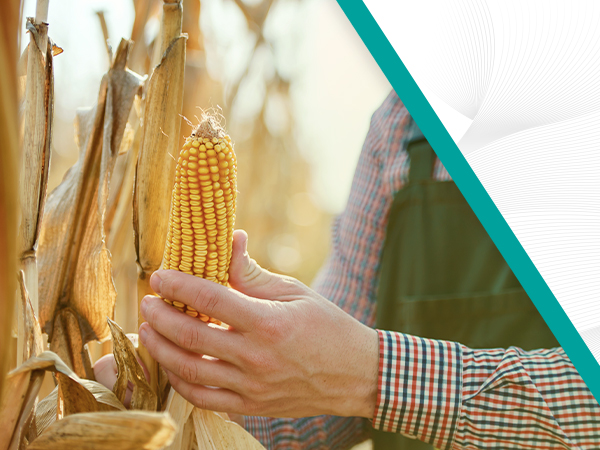Keep an Eye Out: New Trends in the AG Industry 2023 is rolling to an end, but industry advancements and changes remain …


A light wind swept over the corn, and all nature laughed in the sunshine –Anne Bronte.
As autumn draws near, the agricultural industry prepares to harvest one of the most important crops of the year: corn. With over 15.1 billion bushels produced during 2021 in the US alone, corn averages 95% of the total feed grain production in the country. This large production volume also makes the US the primary exporter of corn worldwide, with a record-breaking $18.7 billion obtained from 2.4 billion bushels exported in 2021.
The most widely accepted theory of the origins of corn—also known as maze—goes back about 9,000 years ago in what is today the Balsas River Valley in south-central México. Similar to many other fruits and vegetables that we are accustomed to seeing at our markets, corn is a product of selective breeding. Early farmers looked to optimize yield and valuable product derived from teosinte, a grass belonging to the Zea genus, considered the mother of corn as we know it today. This artificial intervention of choosing the most optimal kernels to plant led to the domestication and mass cultivation of maze throughout the Americas, becoming an important food source for its inhabitants.
Corn was first brought from Mexico into the southwestern United States around 4,000 years ago, likely from being passed along between local inhabitants to hunter-gatherers living further north. A second corn variant, with larger cobs and kernels, arrived from the Pacific Coast about 2,000 years later. From then on, it was expanded through the region by Native Americans, especially in Iowa, where production concentrated due to its ideal geographical and climatic characteristics. To this day, Iowa remains the nation’s largest producer.
Back in the day, the adage “knee-high by the 4th of July” was a saying that had a positive connotation; it meant that, were the corn as high as the farmer’s knee come Independence Day, the yield of that year would be high. However, this traditional “measuring” is no longer the norm. With the many genetic changes and artificial interventions made to corn over the centuries, that saying, although it remains popular, no longer reflects the reality of corn growth today. As a result, it has been replaced by the more accurate description “as high as an elephant’s eye,” taken from the song Oh, What a Beautiful Morning from 1943’s musical “Oklahoma!” to reflect just how tall corn can grow in today’s world.
Corn breeding has made it more resistant to unfavorable conditions, and early planting Has allowed for more growth time. Today, corn can be found in over 90 million acres of land, mainly concentrated in what is known as the “corn belt.” The belt refers to a stretch of rich, fertile soils of about 1,500 long, throughout the Midwest, in many states: Iowa, Illinois, Indiana, South Dakota, Ohio, Nebraska, Kansas, Minnesota, and Missouri.
The US produces six types of corn with various food, seed, and industrial uses: dent, flint, sweet, flour, popcorn, and pod corn. Of these variations, dent is mainly used for stock feed and, most importantly, for ethanol production as biofuel. Although ethanol could be considered a clean source of energy, recent studies by the National Academy of Sciences showed that it is likely 24% more carbon-intensive than gasoline. However, the FDA considered this a relatively green production and noted a 39% lower carbon intensity than gasoline in a study released in 2019.
Aside from being an integral part of the American food supply chain, corn in its refined form has a myriad of usages, from soap, ink, and shoe polish to makeup, medicines, and nanotech. As a result, corn is a powerful driver of local and national economy, strengthening the value of rural communities, developing and growing jobs, and maintaining its impact on diverse industries, which accounted for an output of $47.501 billion in 2020, according to a study conducted by the Corn Refiners Association (CRA).
RELATED ARTICLES
Harvesting Success: Crop Rotation and Cover Crops Crop rotation and the use of cover crops are key tools for sustainable farming practices …

